Besides a comfy bed, clean kitchen counters and 24-hour internet, having lots of hot water for showers is right on up there with guest demands. Hostel laundry & cleaning, guest showers & washing dishes, brewing coffee or tea, boiling eggs or rice or noodles... the list goes on. And heating water is an energy vampire, no matter how you fuel it. The cost of heating water consumes almost 10-15% (possibly as high as 25% depending on where you are located) of your hostel budget. And despite the significant expense, water heaters are typically ignored until they break, leaving you with no hot water, possibly a flood, and definitely some grumpy guests.
There are a few different options for heating water to choose from. Chances are good you may just be stuck with whatever system that came with your property, but if you are able to make choices, you might find a system that works better for you and saves you some pennies.
“Traditional” Tank Storage Water Heaters
Hot water cylinders are commonly found in most properties, which consists of a 30-80 gallon (115-300 liter) insulated tank that stores heated water until it’s needed. The cold water comes in and is heated either via gas or electricity (or both). Then a pipe emerges from the top to deliver hot water to its destination, kitchen, bathroom, or other sinks. Too easy.
Natural gas storage-tank water heaters use almost 50 percent less energy, costing less to operate, than the electric variety. However, they cost a bit more than electric models. They also feature a temperature and pressure-release valve that opens when either temperature or pressure exceeds preset levels.
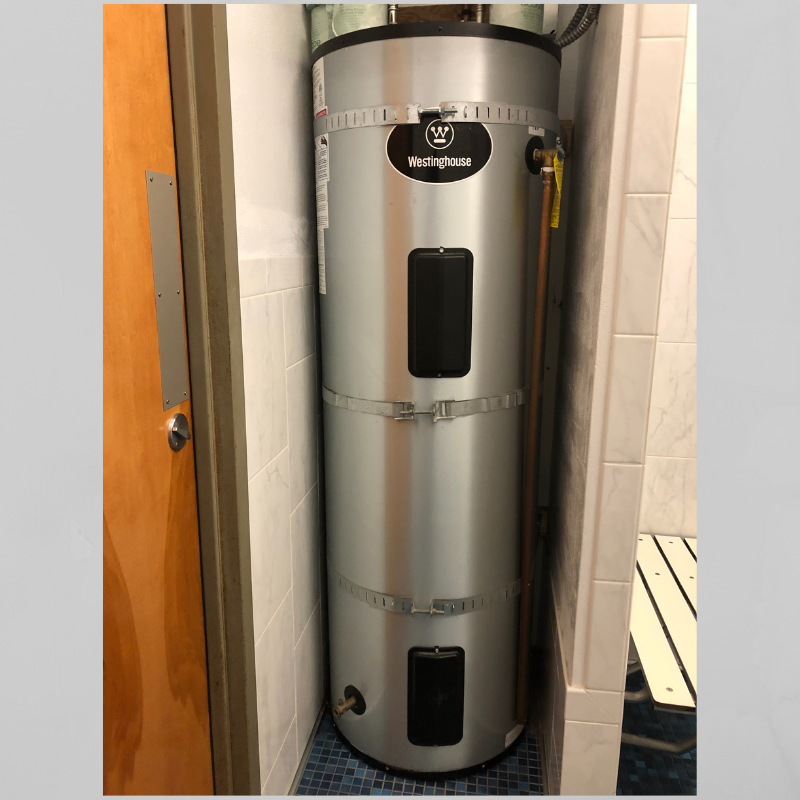
When selecting the size of the hot water cylinder, a simple rule of thumb advised by plumbing companies is you should allow between 35 and 45 liters for every occupant per shower. That said, a mains pressure system can use about 18 liters of water per minute at 40* Celsius if a decent quality shower head is used. You might insist on a time limit or install a timer box to keep water usage down to a minimum...
Advantages of Tank Water Heaters:
- Initial cost- Storage tank water heaters have lower initial cost by a significant margin in comparison to other heating methods. It will generally only cost you around $500 to $800 to purchase and professionally install a good storage tank water heater.
- Storage tank water heaters are a much simpler machine than the tankless or solar varieties. Their simplicity makes for easy, low-cost repairs when these water heaters are not functioning properly. If you have a thermometer, a variety of wrenches and access to YouTube (for those of us who need a little direction), you can probably do some of the maintenance on your own.
Disadvantages of Tank Water Heaters:
- Since storage tank water heaters heat, then reheat the water to pre-set temperature, they increase your utility bills. If your hostel is in a place with cold winters, they’ll work harder during those months, driving your expenses even higher.
- If your hostel is space-restricted, you’ll have challenges finding enough space for storage tanks. Also, they cannot be located outside the building as tankless water heaters can.
- Hot water runs out and takes a while to heat the fresh cold water coming in. Being the last to shower may mean you do not get a hot shower.
- Storage tanks usually only last 9-10 years max.
Tankless Water Heater
Tankless units (also called “on demand”, flash heaters or instant hot water heater) heat water only when you turn on the faucet. They usually operate on natural gas or propane, and the main advantage is that they eliminate the extra cost of keeping 40 to 50 gallons of water hot in a storage tank, so you waste less energy. Tankless water heaters use 30 to 50 percent less energy than storage tanks, which could save your hostel a few hundred dollars per year, depending on water usage. They also offer a continuous supply of hot water, which is ideal for taking several showers. They’re also more compact than a standard water heater and mount on a wall.
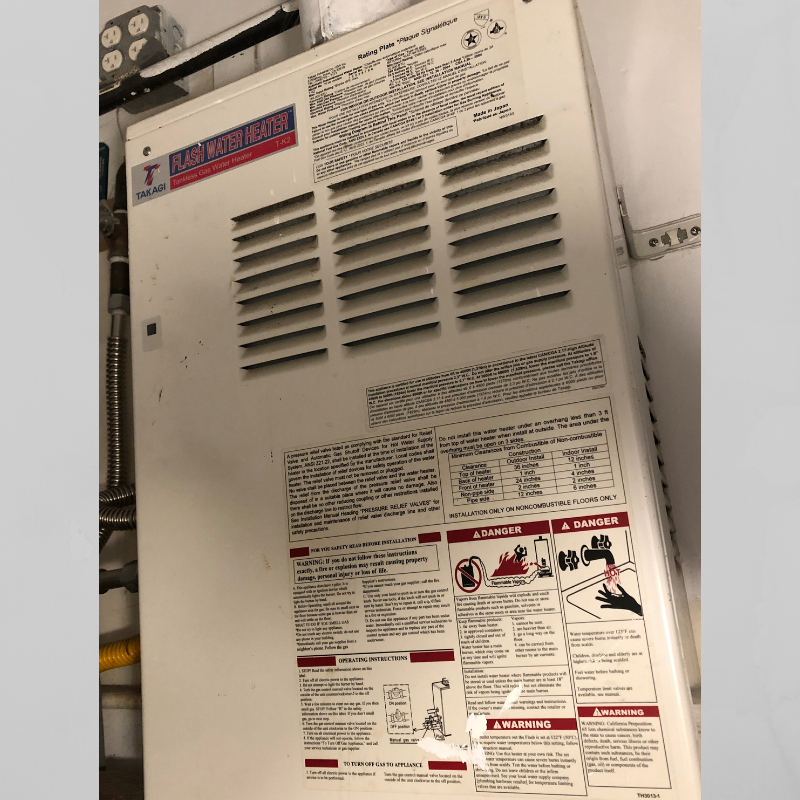
It works when the user opens the hot water tap, the electronics in the tankless unit reacts allowing the ignition to start, generating some sparks. With the ignition electrode sparks, the gas starts flowing into the combustion chamber, where it ignites the burner.
Do note that tankless water heaters should be maintained by a professional at least once a year. But in my personal regular dealings with a tankless heater, because it had so much usage daily, I needed to sandpaper the built up carbon from the flame wand once a month, also.
I observed a variation of this design in many hostels in South America: the showers have a tiny electric flash heater at the top of the shower spigot. The water is heated instantly as it comes out of the spigot. It seemed to work most of the time, but I did experience a few cool showers here and there. Also, the electrical gadget directly over flowing water looks super dangerous to me, but I haven't heard of any electrocutions yet so maybe it's fine.
Another option you might see is the Zip water dispensers in the kitchens, so there is less demand for kettles. Hot tea water on demand!
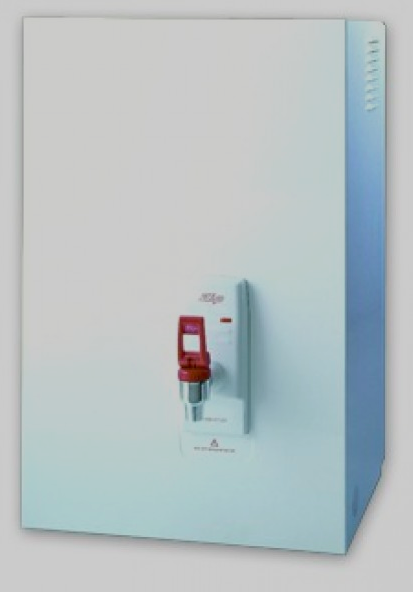
Advantages of a Tankless Water Heater
- Saves you money over time. According to Energy.gov, “On demand (or tankless) water heaters can be 24% to 34% more energy efficient than conventional storage tank water heaters.”
- Lasts much longer than storage tank water heaters. Tankless water heaters typically last 20 to 30 years.
- Space saving: On-demand water heaters are small and may be installed in small space and on outside walls, if necessary.
- Instant hot water. Guests will not have to wait long for hot water, as tankless water heaters deliver two to three gallons of hot water per minute.
Disadvantages of going Tankless
- They can be “output challenged.” Taking many showers and doing laundry in hot water can cause a tankless system to struggle to keep up with the hot water demand.
- Carbon build up on the flame wand after excessive use can be annoying. As stated, once a month, I had to take care of the build up.
- The initial expense can really put people off, especially if you are just starting out and everything is already expensive.
- Switching from Tank to Tankless is not a simple matter. It involves moving pipes around, so will be an added expense to consider.
Solar Powered Heating Systems
What could be better than heating your water for "free" from the sun? Free, of course, is in quotes because you still have to buy the equipment and pay the water rates, but anything to reduce the power bill is a good thing.
There are a couple different types of solar-powered systems, too. Passive and Active being the main two concepts.
In a Passive solar system is similar to a traditional holding tank, only the sun does most of the work usually performed by the water heater’s burner. Cold city water is piped into a rooftop collector, which holds 30 to 50 gallons of water in a serpentine pipe with a heat-capturing coating. Hot water from the collector flows directly to a conventional tank.
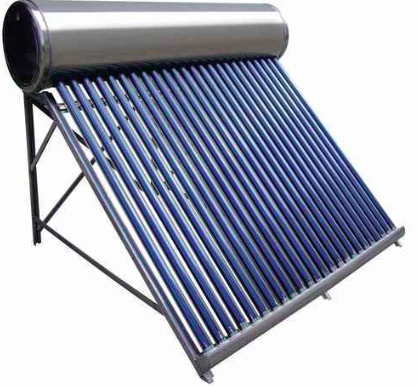
Passive systems are used in areas not prone to freezing and the most common types are integral collector storage (ICS) and thermosiphon systems. **Do note that the thermosiphon system can be a structural challenge in that the panel is 800 pounds and generally placed on the roof.
In an Active system, city water is pumped into the insulated tank, and an electric pump is used to circulate water out of the storage tank to pass through the solar collector and return to the tank.
Advantages of Solar-Powered Water Heater
- Use the power of the sun to heat water, greatly reducing the need for other costly fuel types.
- An excellent choice for sunny locations.
Disadvantages of Solar-Powered Water Heater
- Initial expense. Like the tankless system, the solar-powered systems can be pretty pricy to install.
- Space taker upper. Besides the storage tank, there is also a solar panel/grate.
- Esthetics - the solar panel or collector is probably going to be installed on the roof. Depending on where your hostel is located, and your decor, you may find the bulky/industrial design a bit unsightly.
- State, City, or Neighborhood Laws and By-Laws could be a problem. Be sure to check with local councils or city ordinances before forking over any money.
- In cold-weather areas, the systems require temperature sensors, electric pumps, and automatic control systems, adding significant cost to the installation.
Wetback
Where a solar powered system works great for warm climates, a wetback system is great for cold ones. Water is heated when you have a fire going in the fireplace or stove. The fire heats a water jacket installed in the firebox, where water is circulating. The hot water then circulates back to a storage tank. The warmer water rises and cooler water falls, creating a natural flow.
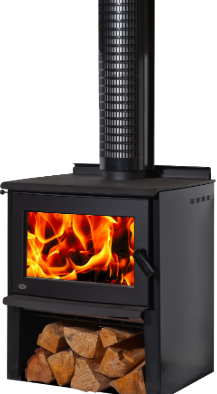
Wetbacks are very common in New Zealand and are used as either the main heating source or as a booster to a traditional tank system. In my personal experience with them, I agree that these work very well in the cooler months when you could use a warm fire anyway. Unfortunately, the wetback was our only means of heating water at the time, and we would have to chop wood and keep a roaring fire going during the hottest days of summer. It is terribly inefficient and a waste of firewood/pellets during the summer months.
Advantages to using a Wetback
- Excellent choice for Colder climates.
- If you need to warm the room or will be roasting a chicken anyway, it is great for that fuel to have a second use.
Disadvantages to using Wetback
- Not suited to warm climates. Wetbacks generally only make a substantial contribution to water heating in cold climates where space heating is needed anyway.
- Overheating occasionally happens, risking boiling the water tank.
- The emissions rating for a fireplace including the water jacket must be determined and permitted, because the water jacket cools the combustion process, increasing the particulates emissions.
- Costs, both initially and ongoing could make you think twice. A wetback can be added to a fireplace at any time, but needs to be permitted in order to be legal which is an extra cost. And the ongoing cost of buying firewood or pellets to keep the fireplace fed is something to consider.
- Space- you will still need a tank to store the heated water.
There are some hybrid systems out there as well, which would be ideal in places like North America's Mid-West, where summers are boiling and winters are icy.
How do you heat your water, besides the tea kettle? Do you have a creative or efficient way of saving money and resources?









